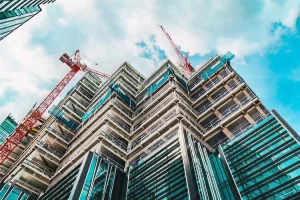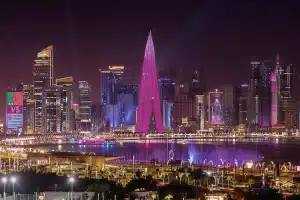
What Developers Really Look for in Façade Partners?
What Developers Really Look for in Façade Partners — and Why It Matters Picking the right façade partner may look easy at first. However, anyone who’s handled a

As a critical element of modern architecture, curtain walls act far beyond their aesthetic role.
They also have the functions like thermal insulation, noise reduction, energy efficiency, and environmental sustainability. However, in practical usage, there are still lots of challenges for architects. And systematic attention and resolution are needed during the process of curtain wall design.
First, let’s look at some key issues in the modern curtain wall design.
☞ Inadequate early-stage planning and lack of holistic design strategies is a very basic problem.
☞ The coordination between curtain wall systems, connectors, and seismic requirements is poor.
☞ Inconsistent application of design codes leads to potential construction and safety risks.
☞ The load calculations is inaccurate with no proper consideration of wind pressure, seismic forces, etc.
☞ Also, the improper selection or misunderstanding of material properties may cause structural calculation.
☞ The assessment of environmental factors like thermal expansion or contraction is very limited.
☞ Relying too much on traditional, manual design approaches makes the design out to date.
☞ The full integration of advanced technologies such as BIM (Building Information Modeling) is not enough.
☞ The interdisciplinary collaboration and coordination is week throughout the design process.


Based on the above problems, let’s find out the corresponding solutions together!
☞ Establish a comprehensive design standard system tailored to functional requirements
☞ Improve research on material performance and prioritize appropriate materials
☞ Refine detail and joint design to enhance water-tightness, air-tightness, and other key metrics
☞ Incorporate performance-based design with simulation and validation processes
☞ Conduct accurate analysis of complex load combinations
☞ Improve seismic resistance design and introduce structural redundancy
☞ Factor in temperature-induced deformation and material aging
☞ Develop a full life-cycle safety evaluation system for long-term reliability
☞ Evaluate and compare multiple design schemes to select the most cost-effective solution
☞ Control material costs while avoiding excessive design margins
☞ Take long-term maintenance costs into account by selecting durable materials
☞ Promote standardized modular designs to improve construction efficiency
☞ Broader application of digital tools and full-process BIM integration
☞ Advancement of intelligent curtain wall systems with responsive capabilities
☞ Adoption of eco-friendly, sustainable materials
☞ Continuous refinement and upgrading of industry codes and standards
Conclusion
By identifying core design issues and implementing targeted optimization strategies, curtain wall systems can achieve a better balance between safety, functionality, and cost. These improvements are key to elevating architectural quality and ensuring long-term building performance.

What Developers Really Look for in Façade Partners — and Why It Matters Picking the right façade partner may look easy at first. However, anyone who’s handled a

Green Building Trends: Aluminum vs. Stainless Steel for Living Façades As green building shifts from trend to standard, the building’s “skin” is undergoing a transformation.

Burj Al Mana Tower: The Story Behind Its Complex Façade and Engineering Rising over Doha’s West Bay, the Burj Al Mana Tower has a story

Every Detail Counts: Understanding SunFrame’s Product Pricing In the world of high-performance windows and curtain walls, every product has a clear cost logic behind it. At